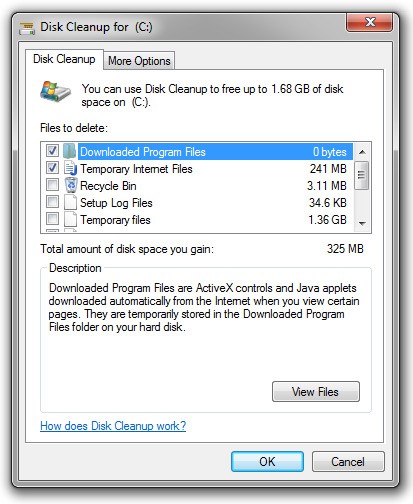

Microsoft doesn’t explain what these files are anywhere, but it’s likely they’re just temporary files.
:max_bytes(150000):strip_icc()/002_how-to-delete-temporary-files-in-windows-2624709-5bb2541246e0fb002615950a.jpg)
Windows Defender: This option deletes “non critical files used by Windows Defender“, according to the Disk Cleanup tool.However, if you don’t plan on ever uninstalling any Windows updates, this is a waste of space. This is safe to delete as long as your computer is working properly and you don’t plan on uninstalling any updates. This allows you to uninstall the updates later. Windows Update Cleanup: When you install updates from Windows Update, Windows keeps older versions of the system files around.Some options may only appear if you have certain types of system files on your hard drive. Older versions of Windows may have slightly fewer options. Note that we used Disk Cleanup on a PC running Windows 10 with the Anniversary Update installed. So what do all the other options do? We went through Disk Cleanup and made a list. RELATED: How to Reduce the Size of Your WinSXS Folder on Windows 7 or 8 Deleting this will make your life harder if you ever want to use the “reset your PC” feature in the future. We recommend not deleting this, unless you desperately need the few gigabytes in hard disk space. You may need to download Windows 10 installation media if you ever want to reset it. If you delete these files, you’ll have more disk space–but you won’t have the files necessary to reset your PC. These ESD files are used for “ resetting your PC” to its factory default settings. Deleting it can free a few gigabytes of hard disk space. This is probably the most important option on the list, as deleting it could cause you problems. On Windows 10, there’s now a “Windows ESD installation files” option here. RELATED: Everything You Need to Know About "Reset This PC" in Windows 8 and 10 Windows ESD Installation Files Are Important Click “OK” after you’re done selecting data and Disk Cleanup will delete the types of data you want to remove. You’ll see the maximum amount of data you can delete at the top of the window, and how much space you’ll actually save at the bottom. To keep a group of files, ensure it’s unchecked. However, this just shows files you can delete with your current user account’s permissions.Īssuming you have administrator access to the computer, you’ll want to click “Clean Up System Files” to view a complete list of files you can delete. It will immediately scan for files it can delete and display a list to you. You can launch Disk Cleanup from the Start menu–just search for “Disk Cleanup”.

RELATED: 7 Ways To Free Up Hard Disk Space On Windows


 0 kommentar(er)
0 kommentar(er)
